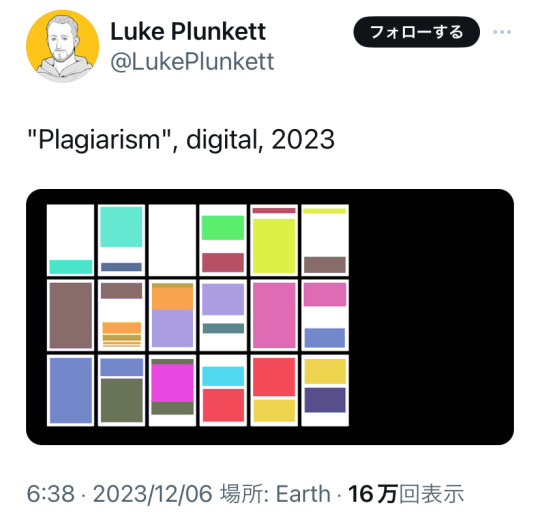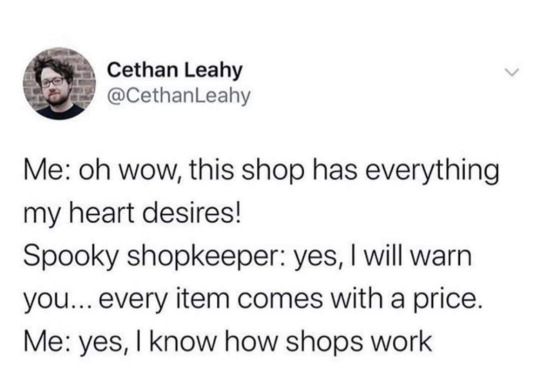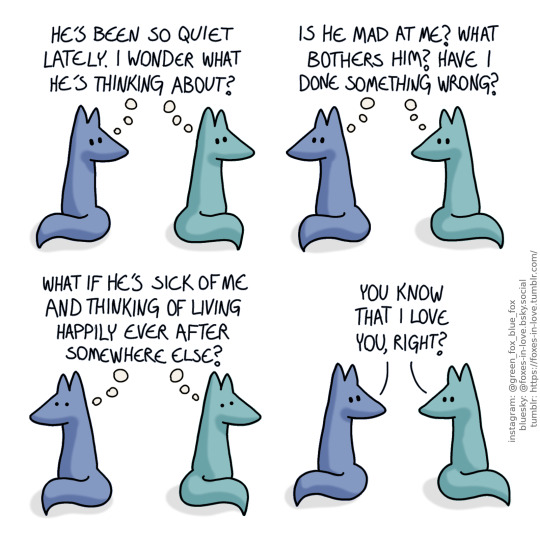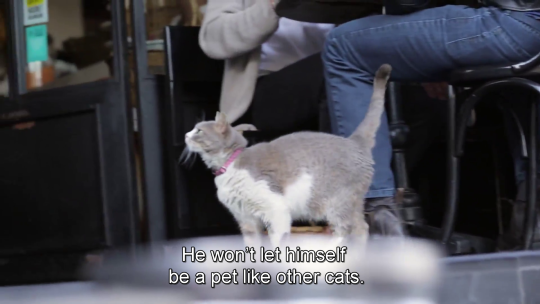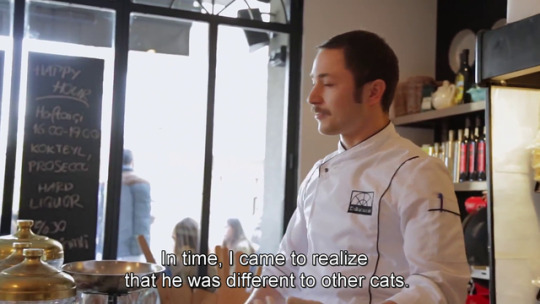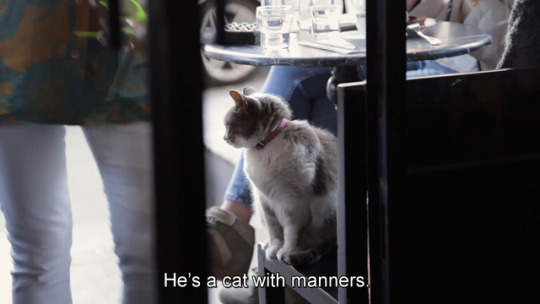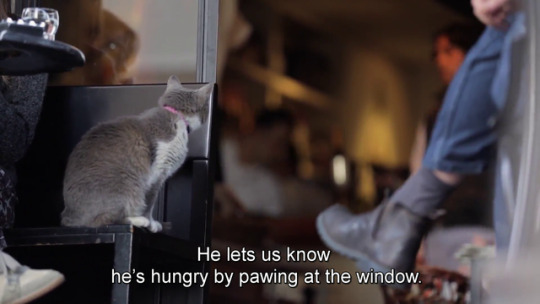Writing, memes about writing and complaining about writing. Fandoms & Ships: Buddie (9-1-1), RoyEd (FMA), Thiam (Teen Wolf), Samifer (Supernatural), Eruri (Attack on Titan), Arthur/Eames (Inception), Marvey (Suits), Drarry (Harry Potter), Shaman King, Fast & Furious, and many more.
Don't wanna be here? Send us removal request.
Text
Free Resources For Writers & Creators
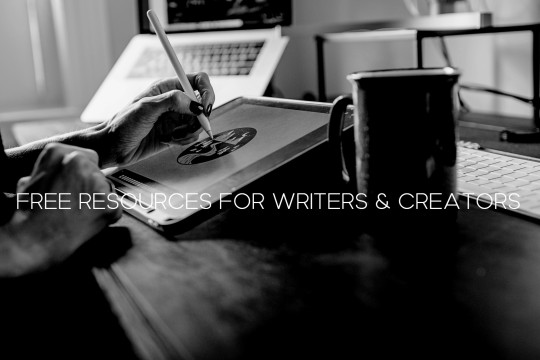
This is a quick post of free resources that may help fandom creators (or creators in general). I’m sure many of these have been shared before. However, it doesn’t hurt to spread the word. A few quick points:
As a professional writer, I think this post will cater mostly towards writers.
I’m also a freelance photographer, so digital photography/editing/art sources are included, too.
I chose not to use any affiliate links in my post. I don’t want to profit from this, and I’m not sure that’s allowed on Tumblr anyways.
If I’ve listed a resource I haven’t used myself, I’ve made sure to state it.
Masterlists and/or huge resource compilations are marked with asterisks.
Alright, here we go! I hope you all find this post helpful. Happy writing/creating!

Research
All of these are free resources for research. I use most of them for my writing jobs because they are extremely credible. These are great for making accurate references in your fics/creations.
1. ***Research Resources For Writers***
Writer’s Write has an enormous database of research resources for writers. They are divided into 20+ categories such as:
careers
historical research
crimes and forensics
religion
Each category contains 10+ resources like websites, articles, tips, databases, and so much more. It’s the most comprehensive and organized free research tool I use.
2. PubMed
My go-to source for citing medical studies. You’ll find 30 million citations related to numerous physical and mental health issues.
3. BioMed Central
I don’t use this website as often, but I keep it in my bookmarks. It’s similar to PubMed - great for discovering current and former medical research.
4. Drugs.com
If you need to name a medication and/or refer to medication side effects, Drugs.com is a straightforward resource. It’s easy to navigate and understand.
It also has a tool that lists potential medication interactions. This is really useful for accurate descriptions of med combinations.
5. Merck Manuals Consumer Version
Merck Manuals started out in 1899 as a medical reference guide for professionals. This consumer version is really comprehensive and updated regularly. It includes definitions, studies, and more.
6. FindLaw
If you’re writing about legal topics, FindLaw is useful for learning about laws/procedures in reader-friendly language. Categories include:
accidents/injuries
criminal law
family law (divorce, custody, etc.)
Keep in mind that laws vary based on location! You’ll often find additional links to state-related laws within articles. I do recommend double-checking state/location-based legal resources for accuracy.
7. APA Dictionary of Psychology
This psychology dictionary is provided by the American Psychological Association. It covers 90+ areas of psychology and 25,000+ terms/definitions.
You’ll also find links to additional psychology databases, resources, and so on. The website is updated frequently to provide updated information.
8. U.S. Bureau Of Labor Statistics
If you’re writing about a character’s job/career in the United States, this is a great source for accuracy. For any job sector, you’ll find details about
education requirements
positions in the sector
average salary for positions
what the positions entail
I imagine there are alternatives for other countries, too!
9. Investopedia Financial Term Dictionary
My area of expertise is personal finance; all of my writing published under my name is in this niche. I still refer to Investopedia’s dictionary for help. It’s excellent for understanding/explaining financial terms in a way that your reader can understand.
10. MedTerms Medical Dictionary
This is the medical version of Investopedia’s dictionary. I use this source less frequently, but I find that it’s accurate and helpful. There are many similar references online if you search for “medical glossaries” or “medical dictionaries”.
11. Domain Authority Checker
I’m not sure if this one is too helpful for fic writers, but it’s one of my most used tools. Domain authority “a search engine ranking score developed by Moz that predicts how likely a website is to rank on search engine result pages (SERPs)”.
The Wikipedia page for domain authority (DA) explains it clearly and simply. To sum it up, websites with good DA scores are considered reliable and accurate. If I cite sources in my work. I always link to sources with good DA scores.
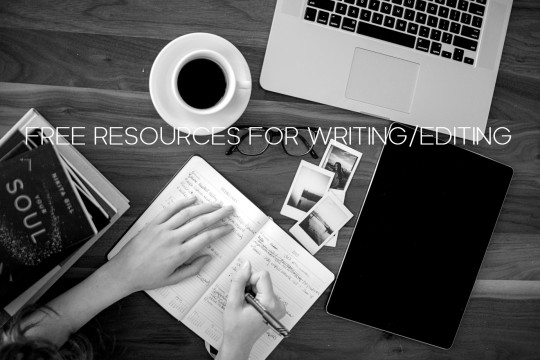
Writing/Editing
This section is the most thorough one. All of these are completely free tools for writing and editing any type of content. I currently use or have used all of these at some point in my career.
1. ***List Of Free And Open-Source Software Packages***
This Wikipedia page applies to multiple categories in my post. It’s a masterpost of free and open-source software for anything and everything. Software is divided up into categories and sub-categories. Some relevant examples include:
media
networking/Internet
image editing
file management
There are hundreds of free software links on the page, so you’ll need to do a bit of browsing. Start with the categories above to find software geared towards writers/creators.
2. OpenOffice
This is a free alternative to Microsoft Office. I’ve used it for nine years and love it. OpenOffice software includes free applications for:
text documents
spreadsheets
presentations
drawing
templates
There are many more tools with OpenOffice that I haven’t used. If you write offline, I cannot recommend it enough. Tutorials are readily available online, and the software is pretty user-friendly.
3. Evernote
I briefly used Evernote and found that it’s very user-friendly and helpful. Most of my colleagues use Evernote and recommend it for taking notes/staying organized.
(I’m personally not a fan of note-taking software or apps. My method is messy text documents with bullet point lists.)
4. Google Drive
This might seem like an obvious one, but Google Drive/Docs is my writing haven. It has the tools included with Microsoft Office and OpenOffice and then some. It’s great for collaborative writing/sharing documents, too.
5. Grammarly
I use the Premium (paid) version of Grammarly, but I also used the free version for years. It’s helpful for detecting simple spelling, style, and grammatical errors.
There are numerous ways to use it - desktop, copy/paste documents, and so on. I’m not a huge fan of how well it works with Google Docs, but they’re improving it/it’s moved out of beta mode.
If you’re interested in the paid version - which I highly recommend - wait to buy until a holiday pops up. They offer a major discount on the software for almost every holiday/special occasion.
6. Plagiarism Detector
This website is handy for scanning for plagiarism. You can scan your own work to ensure uniqueness, too. My clients are big fans of this tool.
(I no longer use this resource; I use a paid tool called Copyscape Premium. The low cost has a big return on investment for me.)
7. TitleCase
The name says it all. It’s free and simple! I’ll be honest - I’m terrible with proper title case. You’d think after a decade of writing I’d nail it. However, I use this tool pretty often.
8. Hemingway Editor
Hemingway Editor is an online and desktop editor. It’s excellent for scanning your writing to check for:
readability (a grade-level score is listed)
adverb usage
passive voice usage
complex phrase usage
estimated reading time
This tool is color-coded to make editing easy. For example, adverbs are highlighted in blue. I don’t use this as often as I used to, but it was essential for my early writing career.
9. Polish My Writing
This tool is very straightforward. You paste your writing into the text box. Spelling errors, grammar suggestions, and style suggestions are highlighted in red, blue, and green.
It’s great for double-checking your work alongside Grammarly or Hemingway. When using free editors, I recommend using at least two for higher accuracy.
10. OneLook Reverse Dictionary And Thesaurus
I’m going to use the definition directly from the website:
“This tool lets you describe a concept and get back a list of words and phrases related to that concept. Your description can be anything at all: a single word, a few words, or even a whole sentence. Type in your description and hit Enter (or select a word that shows up in the autocomplete preview) to see the related words.”
To put it simply, you can use the reverse dictionary/thesaurus to find those words/thoughts that are on the tip of your tongue. Use the tool to:
find a word based on the word’s definition (i.e. search for “inability to feel pain”)
find synonyms and related concepts
generate a list of category-specific words (i.e. search for “cat breeds”)
answer basic questions (i.e. search for “what is the capital of France?”)
The results can be hit or miss, but I usually find the information I’m looking for. It’s a solid resource any writer regardless of genre.
11. Word Frequency Counter + Phrase Frequency Counter
I cannot emphasize how much I love these tools. Repetition is the bane of a writer’s existence; it’s simply inevitable at times.
These two tools count the number of times you use a single word or phrase in a text document. Just copy/paste your document, hit submit, and you’re all set!
For the phrase frequency counter, you can scan for two-word to ten-word phrases.
12. Thesaurus.com
This is another tool that might seem painfully obvious. Combined with the word frequency counter, it’s such an essential resource for me.
It’s especially useful if you’re writing about the same topic multiple times (i.e. love, getting drunk, sex, etc.). I always use this combo of tools to ensure uniqueness.
13. Lists Of Colors
Are you stumped when trying to come up with unique shades of blue? Is describing your character’s hair or skin color difficult? This Wikipedia page has you covered. It contains:
lists of colors (alphabetically)
lists of colors by shade
lists of Crayola crayon colors
lists of color palettes
I typically use this resource for product descriptions, but I also used it for creative writing many times. It’s a lifesaver for all things color-related.
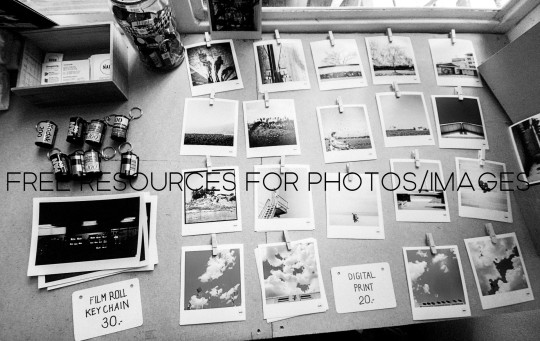
Free Photos/Images
Tons of creators need free photos/images for numerous reasons. All of these sources provide 100% free photos, illustrations, etc. that have a Creative Commons Zero (CC0) license. This means there’s no copyright whatsoever on them.
You can edit the images however you’d like, too. All of the images in my post are from the first source listed below. I made them black and white and added text.
(A lot of these sites have donate buttons for contributors. Donating a dollar here and there goes a long way!)
1. Unsplash
Unsplash is my personal favorite for high-resolution photos. It’s easy to navigate and has over 2,000,000 free images. Downloading an image is a one-click process, and you don’t need to create an account.
2. Pixabay
Pixabay is my go-to site for illustrations and vector graphics (they have photos, too). There are 1.9 million free images to choose from. You don’t need an account to download images, but I recommend creating one. It’s free and with an account:
you don’t have to complete a CAPTCHA every time you download an image
you can access higher-quality/larger/etc. versions of images
I often use graphics from Pixabay to create overlays and masks for mixed media art pieces.
3. PxHere
I’ve never used PxHere, but one of my writing clients recommends it. It seems very similar to Pixabay, and the interface is user-friendly.
4. Pexels
In my limited experience, Pexels seems to focus on “artsy” stock images/content. I found great high-quality images the few times I’ve used it.
5. Burst by Shopify
I haven’t used Burst, but it’s another free image site that a writing client recommended to me. It seems a little limited compared to the other sites, but it never hurts to add it to your toolbox!

Digital Art/Photo Editing/Etc.
This section seems brief, but the tools listed are pretty comprehensive and diverse. They are geared towards many creative needs/projects like:
Creating manips of people/etc.
Adding text to images.
Creating collages.
Digital illustration.
Advanced photo editing.
There’s something for everyone. In my experience, finding your favorites among these will take some trial and error.
1. Pixlr X and Pixlr E (app available)
Pixlr X and Pixlr E are both versatile free editing tools. Pixlr X is ideal for less experienced creators. Pixlr E is comparable to Adobe PhotoShop.
I’ve used both software formats for personal and professional art projects.
The Pixlr app is handy for making collages, adding filters/overlays, adding text, and so on. I’ve used it for creating fanfiction collages and similar projects. It’s super easy to use.
2. Remove Background by Pixlr
This is one of the easiest/fastest tools I’ve found for removing backgrounds from images. It’s perfect for creators who make manips using photos of people.
It takes literal seconds to use. The tool automatically removes the background. If you spot any mistakes, you can refine the results with brush/erase tools. Then you download the cutout and you’re all set!
Unfortunately, this feature isn’t available on the Pixlr app. There are a lot of smartphone apps for removing photo backgrounds.
3. GIMP
If you need a full-fledged Photoshop alternative, GIMP is excellent software. It’s not an online tool like most I’ve suggested; you’ll need to download it to your computer.
There’s quite a learning curve for it, unless you’re familiar with Photoshop already. Fortunately, the free video/text GIMP tutorials online are endless. I no longer use/need GIMP, but it’s a personal favorite of mine.
4. Paint.NET
Admittedly, I haven’t used Paint.NET, but my art/photography colleagues commonly mention it. It’s comparable to Photoshop and GIMP. It’s a web-based tool, and a quick Google search returns several tutorials for it.
5. Photopea
This is more or less a Photoshop clone, but it’s free and web-based. If you watch Photoshop tutorials, you can usually follow the same steps in PhotoPea.
I’ve only used it a few times; I have Photoshop so I don’t need it. Still, it’s very impressive - especially for a free tool.
6. PicsArt (app available)
PicsArt is a photo editing website and app; the app is much easier to use in my opinion. It’s a “fun” editing tool for photo manips, collages, and fan art in general. A lot of users post their art in the app, and I’ve noticed tons of cool fandom edits.
Some of the features are Premium (AKA cost money), but I don’t think they’re worth the extra cost. PicsArt also has a digital drawing app. I haven’t personally used it but it may be worth checking out!
7. Adobe Photoshop Express (app available)
(I’ll preface this by saying I have an Adobe subscription, so I have access to the “locked” features. I’ve used the free versions, but my memory of it is a bit hazy.)
Photoshop Express is a free web-based tool and smartphone app. The app is very user-friendly and can be used for detailed editing, adding filters, adding text, and so on.
I’m less familiar with the browser version; I only use it for the cutout tool when I’m feeling lazy. It seems to be a good fit for quick edits - filters, cropping, and so on.
8. Make PNG Transparent by Online PNG Tools
This tool is awesome for removing solid colored backgrounds. I use it to create graphics for mixed media art pieces. Here’s how it works:
upload an image
type the color your want to remove (name or hex code)
type the percentage of similar color tones you want to match (for example, 25% will remove your chosen color plus similar warm/cool tones)
the removed color is replaced with transparent pixels
If you want to make a JPG transparent, start with the website’s JPG to PNG Converter. There are a ton of useful free tools offered, but I haven’t tried out most of the others.
Wrap Up
That’s all I’ve got for now! If I think of additional free tools, I’ll add them to this post. Feel free to reblog with your own recommendations or message me if you’d like me to add anything.
I hope my fellow creatives find these too
346 notes
·
View notes
Text
I feel like the Hbomberguy plagiarism video has a lot of really good lessons about building an argument. Like, the thesis of the video isn't just "Plagiarism is rife on Youtube", although that point was certainly well made, it was specifically about James Somerton, who isn't mentioned until about halfway through the video. Before then, Hbomb goes through several creators who are already widely discredited as plagiarists, and in each section he introduces concepts that are later incorporated into the final takedown of Somerton, but each section also stands on it's own. Like, he starts with Filip, the game reviewer, which he uses to introduce the format of how he will discuss and expose plagiarists. Specifically, the graphic of displaying the source material while the plagiarist's voice plays, and marking up said source material every time the plagiarist changes some wording slightly. This is the method that Hbomb uses across the entire video. With Illuminaughtii, Hbomb introduces a few major concepts 1) The idea of Insufficient citation. Illuminaughtii "Cites" her sources by putting a plaintext pastebin link in her video descriptions with no indication of how each source was used. Technically, her source is CITED, but not in any relevant or useful way. She has a big list of stuff she read, and a random youtube link in there happens to be the source that she stole 90% of the video from. 2) He introduces the profit motive behind this approach. Putting out a lot of content very quickly is how one builds an audience, and therefore an income, out of making stuff on youtube. Plagiarism of this sort is a way to produce content very quickly and build a following. The Internet Historian section introduces two new concepts:
1) The behavior of an exposed plagiarist, taking down and reuploading videos with minor changes, awkwardly trying to insert credit without admitting guilt. 2) That the plagiarists are stealing not just research, but STYLE. Previous sections go over how the plagiarists are reusing the same words, but this section oozes over how much of the final product's quality was the result of how well the source material was written. TIH didn't just crib the notes from the Mentalfloss article, he created a video heavily dependent on the original author's skill as a writer. When TIH tried his own hand at presenting the same set of facts, it came out much worse. So that when the time comes for the Somerton takedown, Hbomb has already laid the groundwork to bring these concepts back. Somerton takes down and reuploads videos when he's caught, he declares this his video is "based on" work by somebody else without providing proper citation. He's not just stealing research done by somebody else, he's taking their insights and talent as a writer and regurgitating it as his own, and he's doing so to churn out a vast wall of content that he can financially benefit from, and he doesn't need to tell you why this is important, because he's already done so. He already convinced you that Illuminaughtii hiding a line in a pastebin didn't excuse her plagiarism, so you don't need to be told why Somerton saying his video is "Based On" somebody else's book doesn't excuse it.
11K notes
·
View notes
Text
Death Note AU where hbomberguy makes a five hour long video about youtuber Light Yagami that's initially completely unrelated to the murders (Light would probably plagiarize or have really unhinged right-wing political takes if he was on youtube)
but halfway through he reveals that while researching he stumbled upon evidence that Light might be behind the Kira murders, and then spends like fourty minutes explaining the concept of a shinigami, an hour explaining how he thinks Light used one to commit murders, and then another hour explaining Light's ideology and why the concept of criminals being inherently evil is flawed
He finishes the video by addressing Light directly and telling him that he (Hbomberguy) had his name legally changed before uploading the video, to something that only he knows, making it impossible for Light to kill him
139K notes
·
View notes
Note
do you have an "about" page with relevant information about yourself (eg pronouns, a name you go by, etc)? only i like your blog but always feel strange about following blogs with no face so to speak
I’ve answered this before so we’re going to do this bullet points style
-If there are categories of people you don’t want to follow please assume I belong to all of them
-If you need my demographic info before you can decide if you agree with my opinion or not please disagree with my opinions
-Please assume I am up to no good - this is a good thing to assume with any blog on here - even blogs with faces may be no-faces in disguise
-All of the information you want has been posted here at one time or another if you want to know but I like having that threshold of difficulty in place - if you want to get your creep on I want you to have to work for it
-I am hoping the irony of your having sent this ask anonymously is not lost on you
And, for all bloggers everywhere, a quick reminder: you don’t owe anybody jack shit!
62K notes
·
View notes
Text
so judging by how astonished people are by it every time we explain it to anybody, it seems like my wife and I might really be onto something here
during the pandemic, we invented something we call "astronaut time."
when it's astronaut time, it's like we are two astronauts wearing the big helmets, moving around the station on totally separate tasks. one of us is outside the space station and one of us is inside the space station. our radios do not work and we have no way of communicating with each other. we might see each other through the lil porthole windows, but we ignore each other because we both have different things to do.
"astronaut time" is how we get total privacy when we live in the same apartment. I will pretend you don't exist. You will pretend I don't exist. we have a nonverbal, zero-contact signal for when astronaut time is over (usually "I'll draw a smiley-face on the whiteboard in the kitchen when I'm done"). No talking, stay out of each other's line of sight, we are actively avoiding each other, unless you are currently experiencing a medical emergency goodbye.
it has been. a godsend. imagine living with your partner and being able to close every single tab in your brain related to social interaction. no fear of being interrupted by a "hey, quick question--" or "sorry to bother you, but do you know where the scissors are?" or "did you want something to eat, too?" Once or twice a month, we look at each other lovingly, hold hands, and say "baby I think I need some astronaut time tonight," and the other person goes "okay cool. bye! have a nice night!" and nobody's feelings are hurt and we both go and have a lovely evening completely by ourselves.
like idk it's a small thing but it's made our lives so much nicer, so if you and your partner/roommate are both people who sometimes need total privacy in order to recharge, maybe try it
101K notes
·
View notes
Text

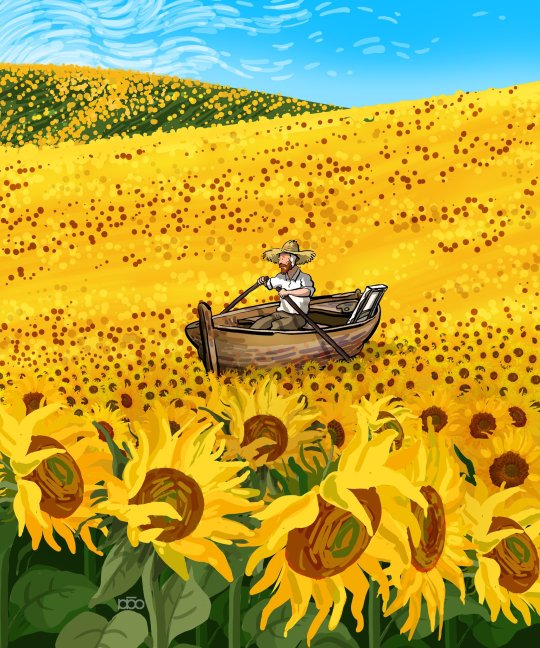
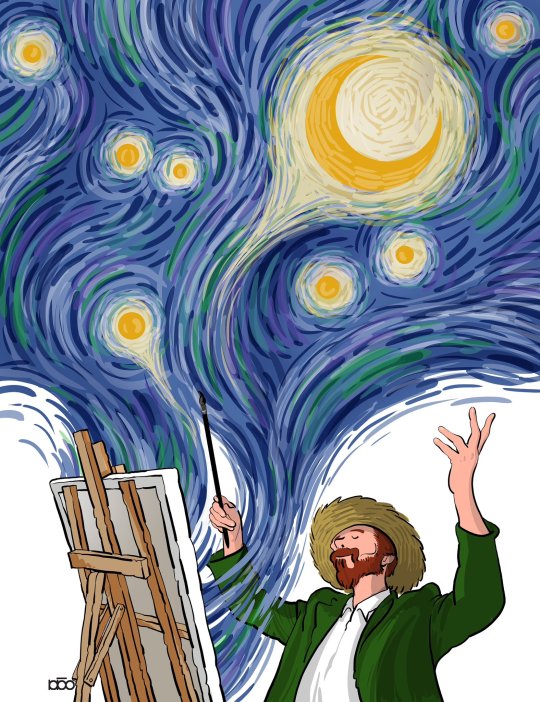
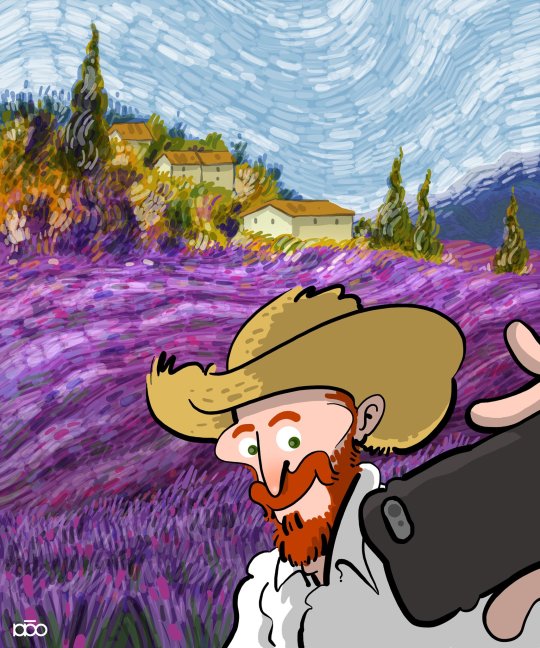
Alireza Karimi Moghaddam
This man puts a smile on Vincent's face...
Lisbon-based and Iran born artist Alireza Karimi Moghaddam recreates Vincent Van Gogh’s art in his own style. Alireza’s cartoon drawings show that Van Gogh’s life was all about beauty and love.
In his words “As a teenager, I fell in love with Van Gogh’s life story and classic paintings. His style, vibrant colors, and lifestyle inspired me. I followed almost all the books and movies that have been made about Van Gogh, and I immersed myself in the love of his life.
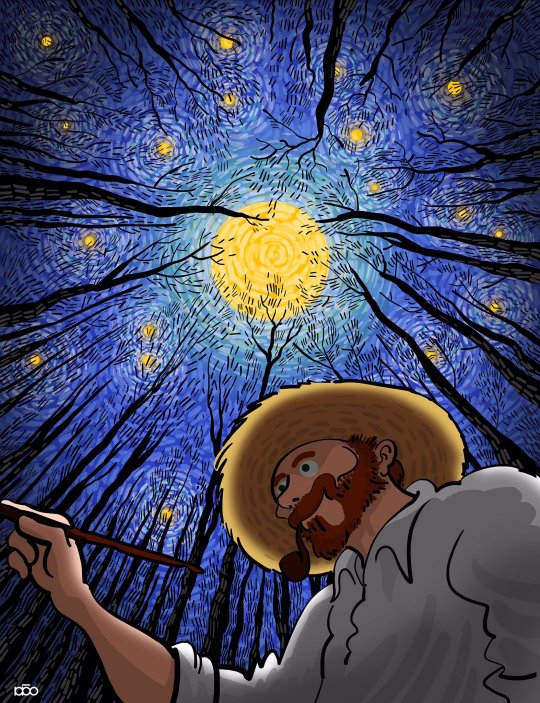
For me, Van Gogh is not only a famous artist and a genius but a way of life. He is not a frustrated and distressed model but a symbol of love, humanity, and altruism. I understand and propagate his creative ideas from a different perspective, and on the contrary to a prevailing traditional view, I would like a different Van Gogh to be a Van Gogh for everyone.”
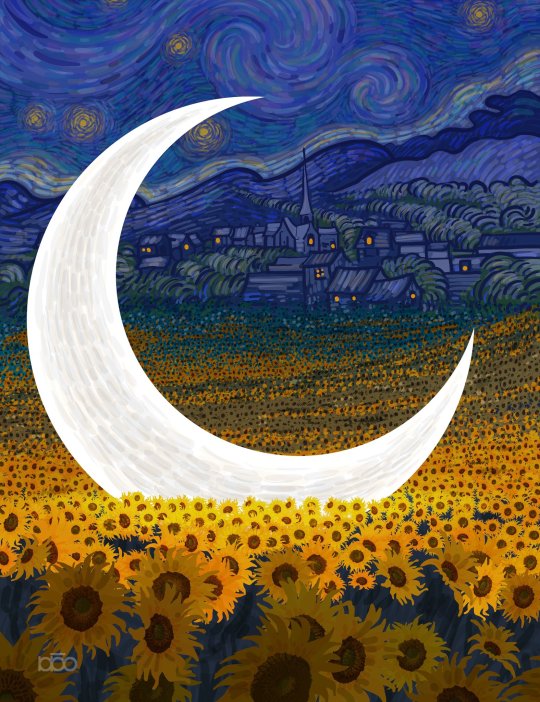
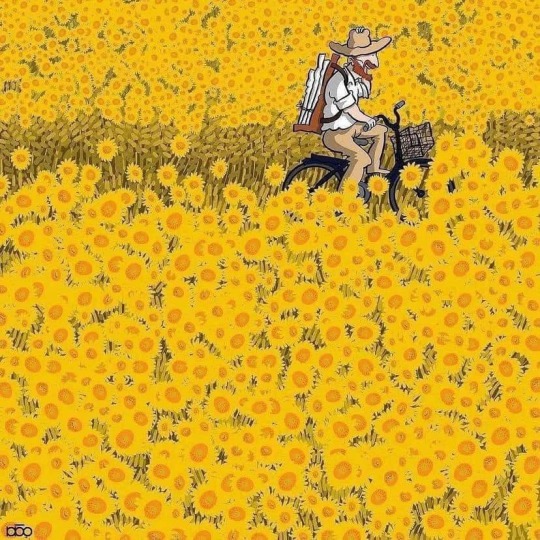


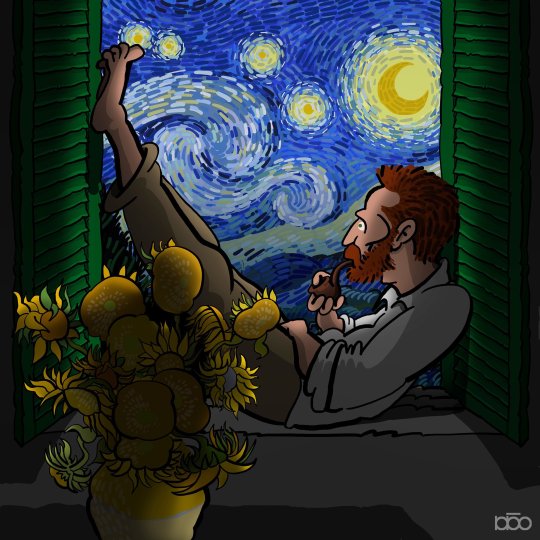
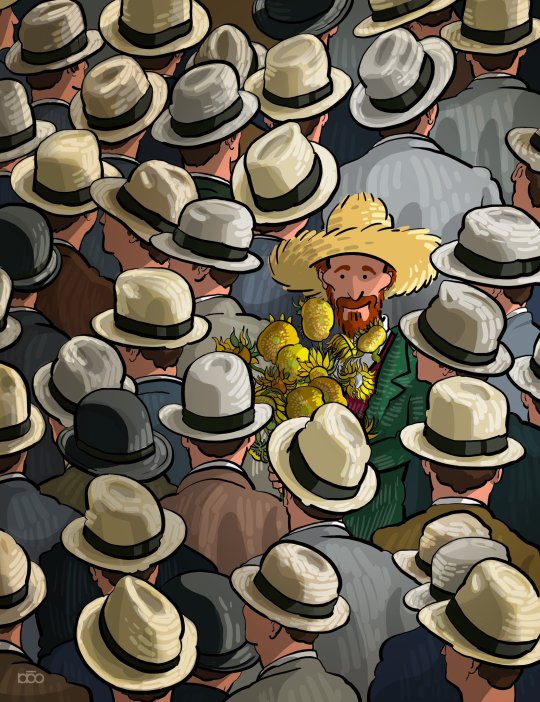

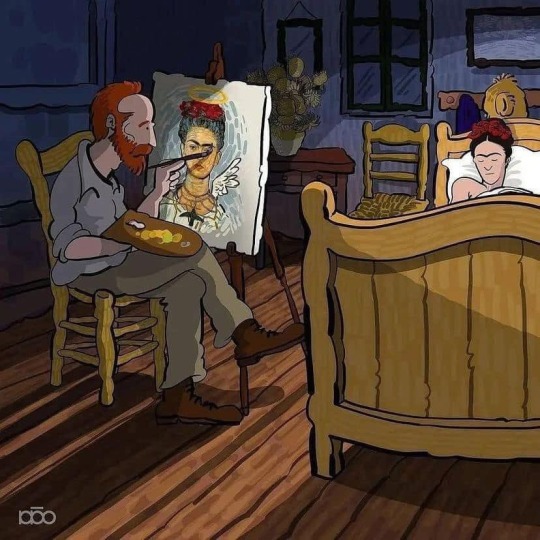
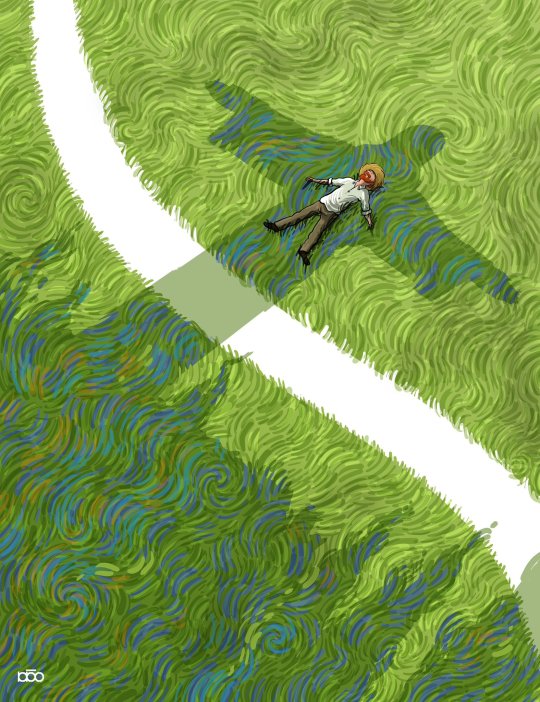
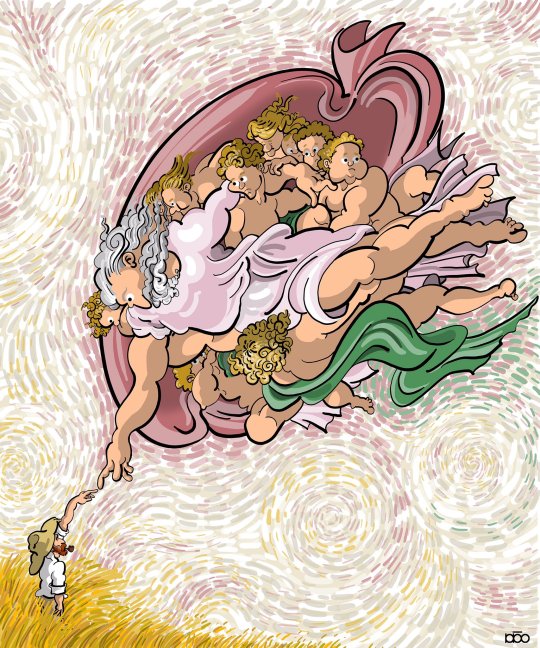

Alireza Karimi Moghaddam
140 notes
·
View notes
Text
reminder to:
straighten your back
go pee goddAMN IT STOP HOLDING IT
go take your meds if you need to
drink some water
go get a snack if you havent eaten in a while
maybe wander around the house/stretch a little if you’ve been sat at the computer a while (artists especially: sTRETCH THOSE WRISTS)
reply to that text/message from earlier you’d forgotten about
maybe send a nice lil message to someone having a bad day?
1M notes
·
View notes
Text
can he sit on your dash for a minute?? he'll be very polite :]
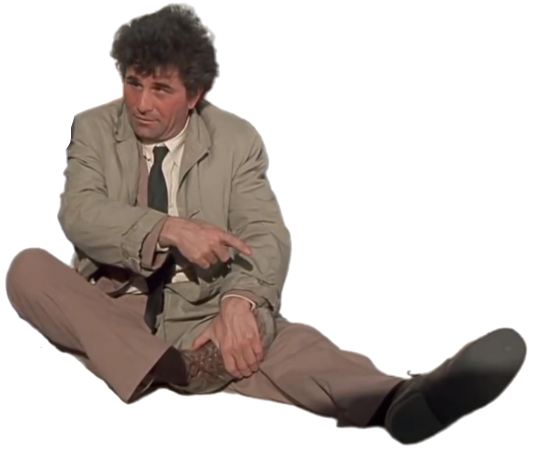
97K notes
·
View notes
Text

In modern Japanese, camera is just called 'camera' = カメラ - the same as English, it is a borrowed word.
But Sukuna is old af. He calls it 写真機 (shashinki) - literally 'photography device' - an outdated word from Meiji period I don't think anybody uses anymore.
Aw, A++ writing, my inner linguist nerd is purring
12K notes
·
View notes
Text
Fucking edits lol
So, one of my early readers noted that a dog was missing from a scene. Sent me a note about it.
With slowly growing horror, I realized that not only was the dog missing from that scene, but I had forgotten to include him for the ENTIRE REST OF THE BOOK.
The dog disappeared in Chapter 45.
The book is 116 chapters long.
*siiigh*
Back into the editing salt mines for me I fucking guess.
64 notes
·
View notes
